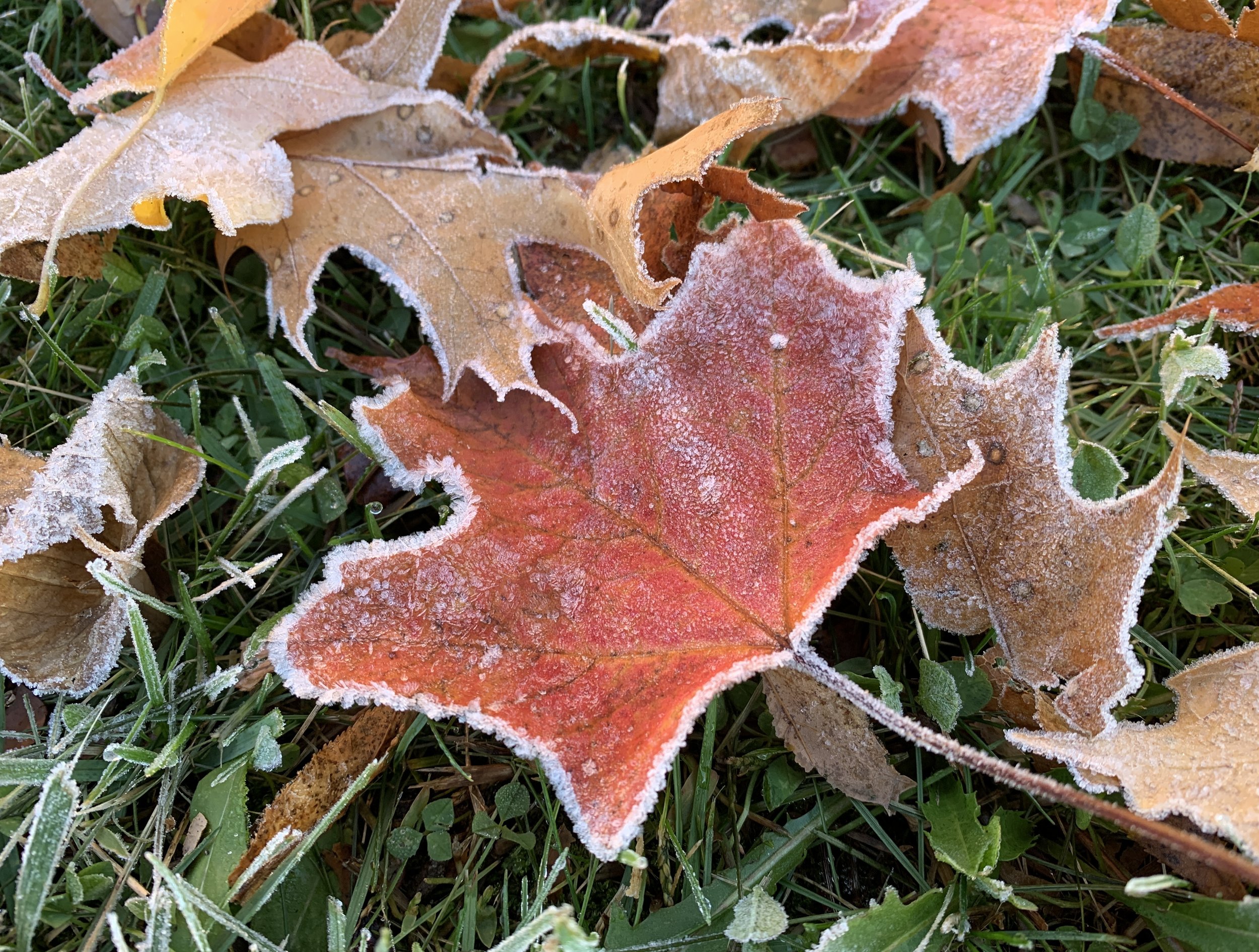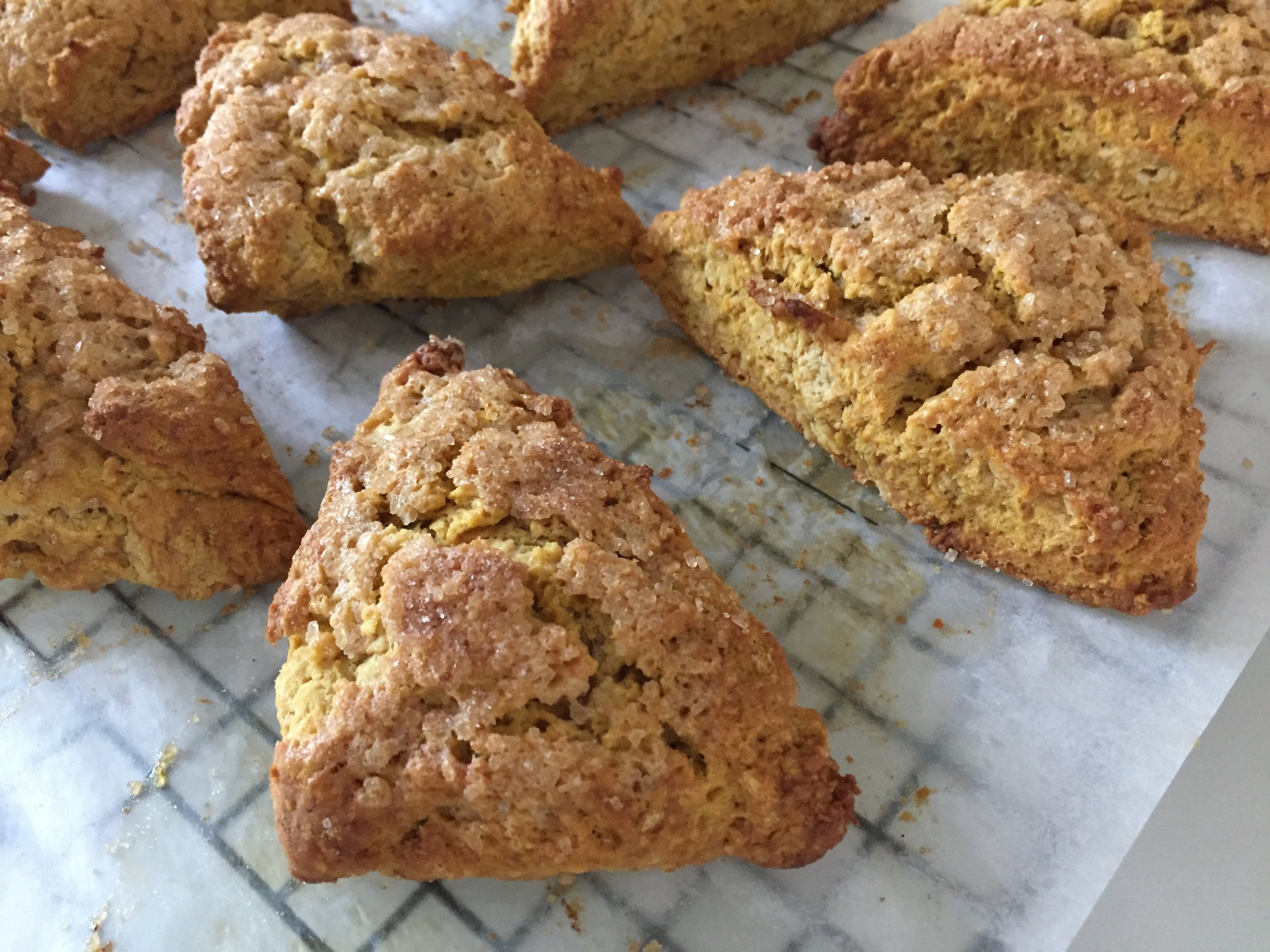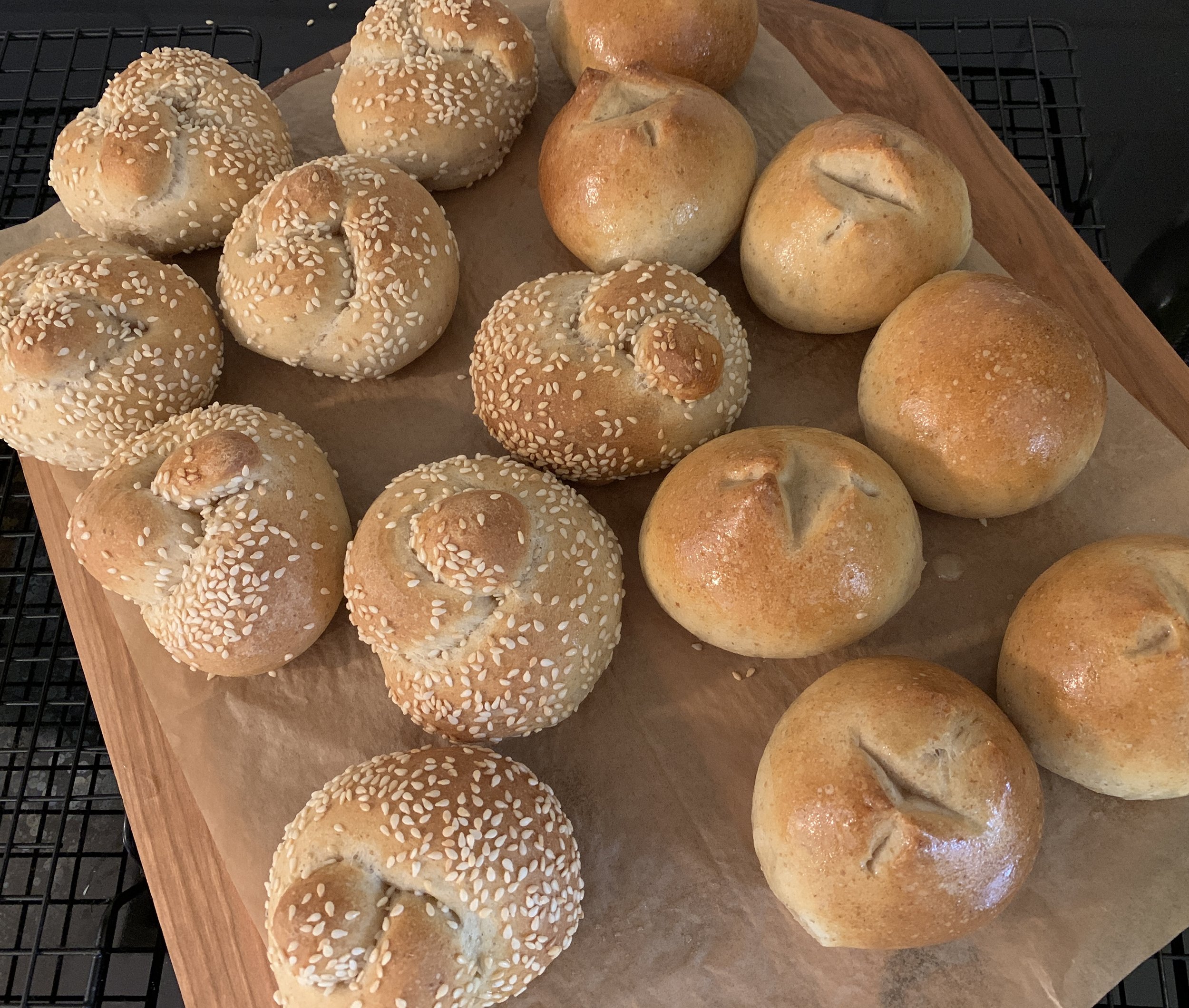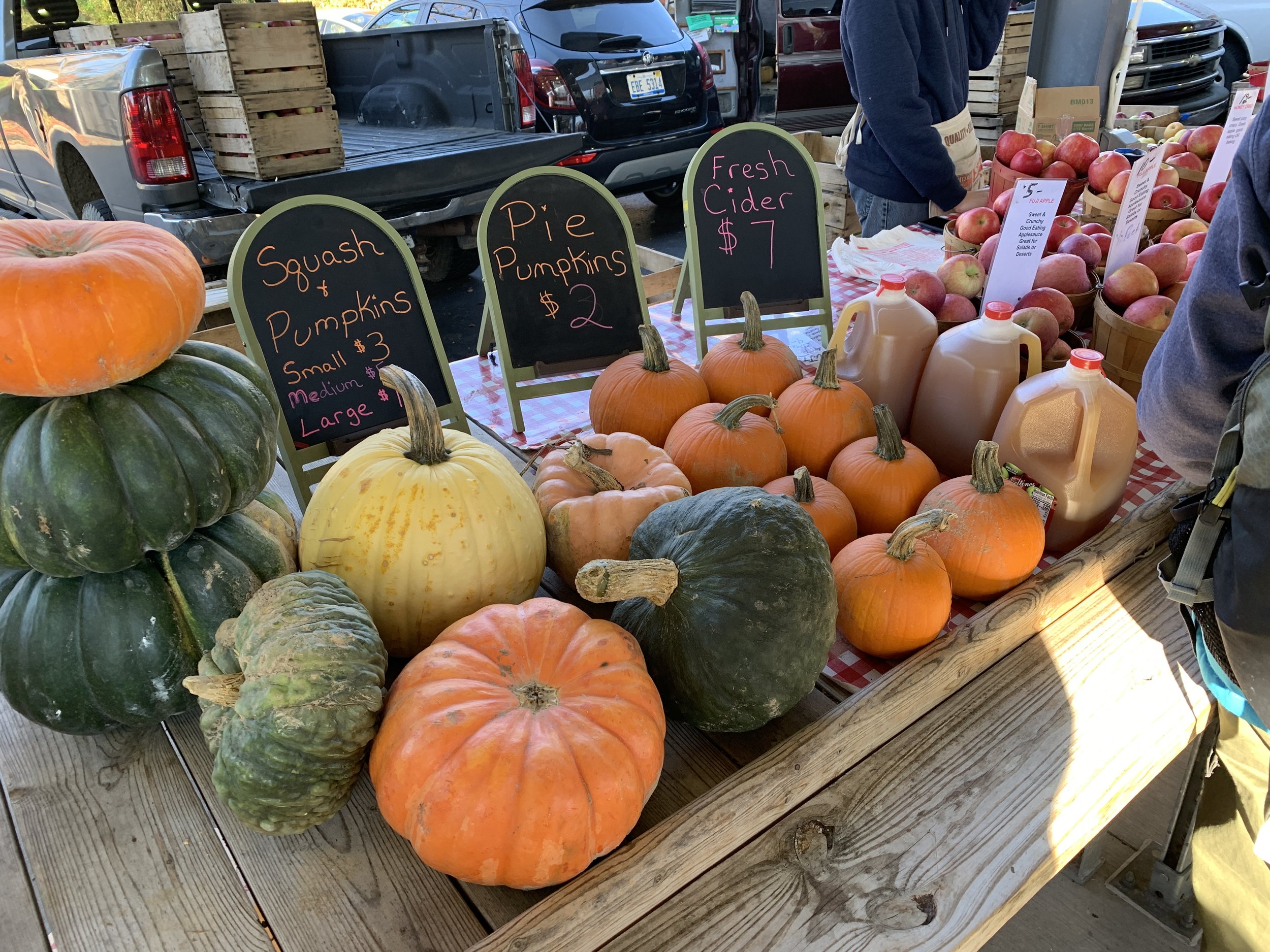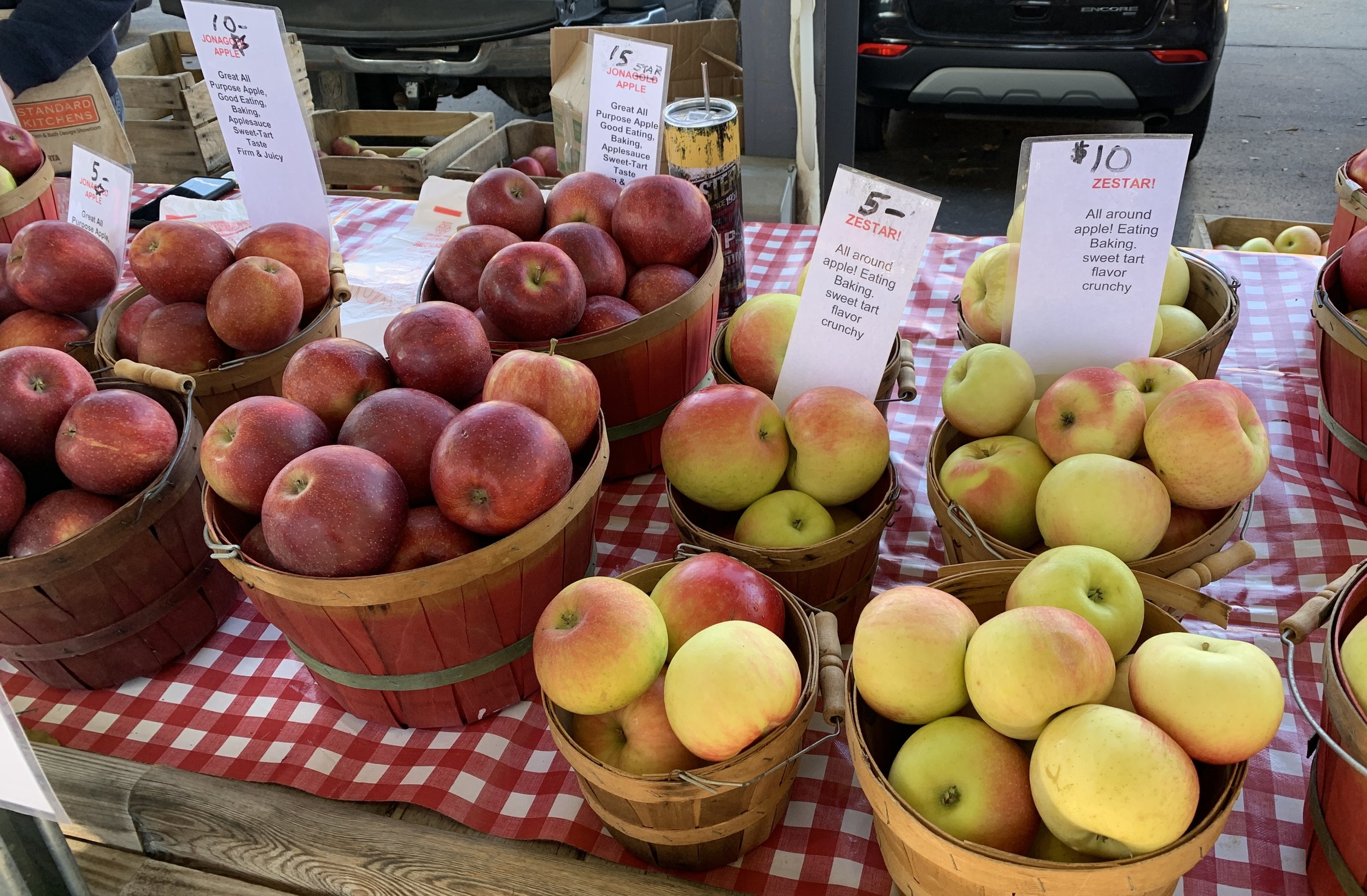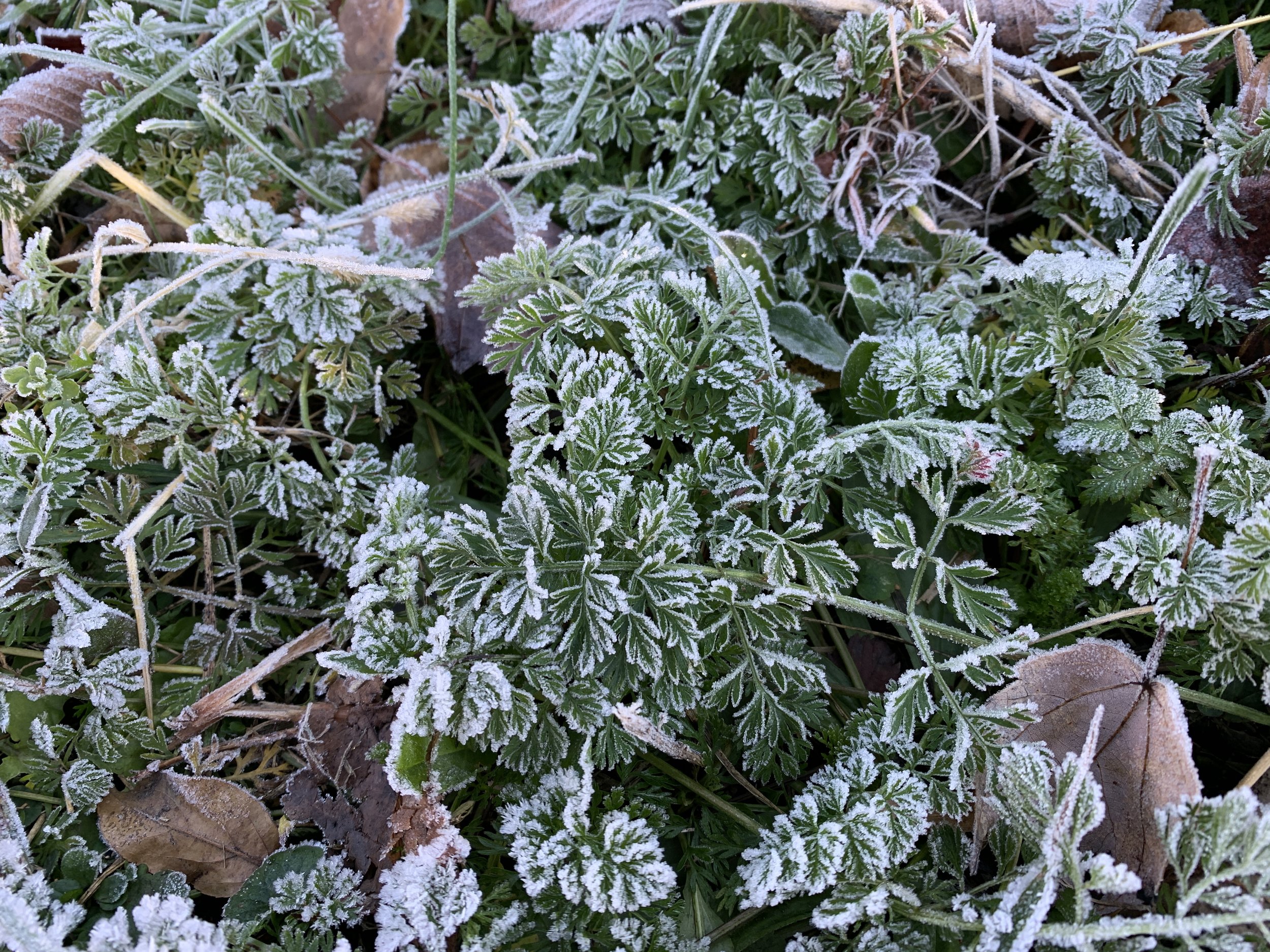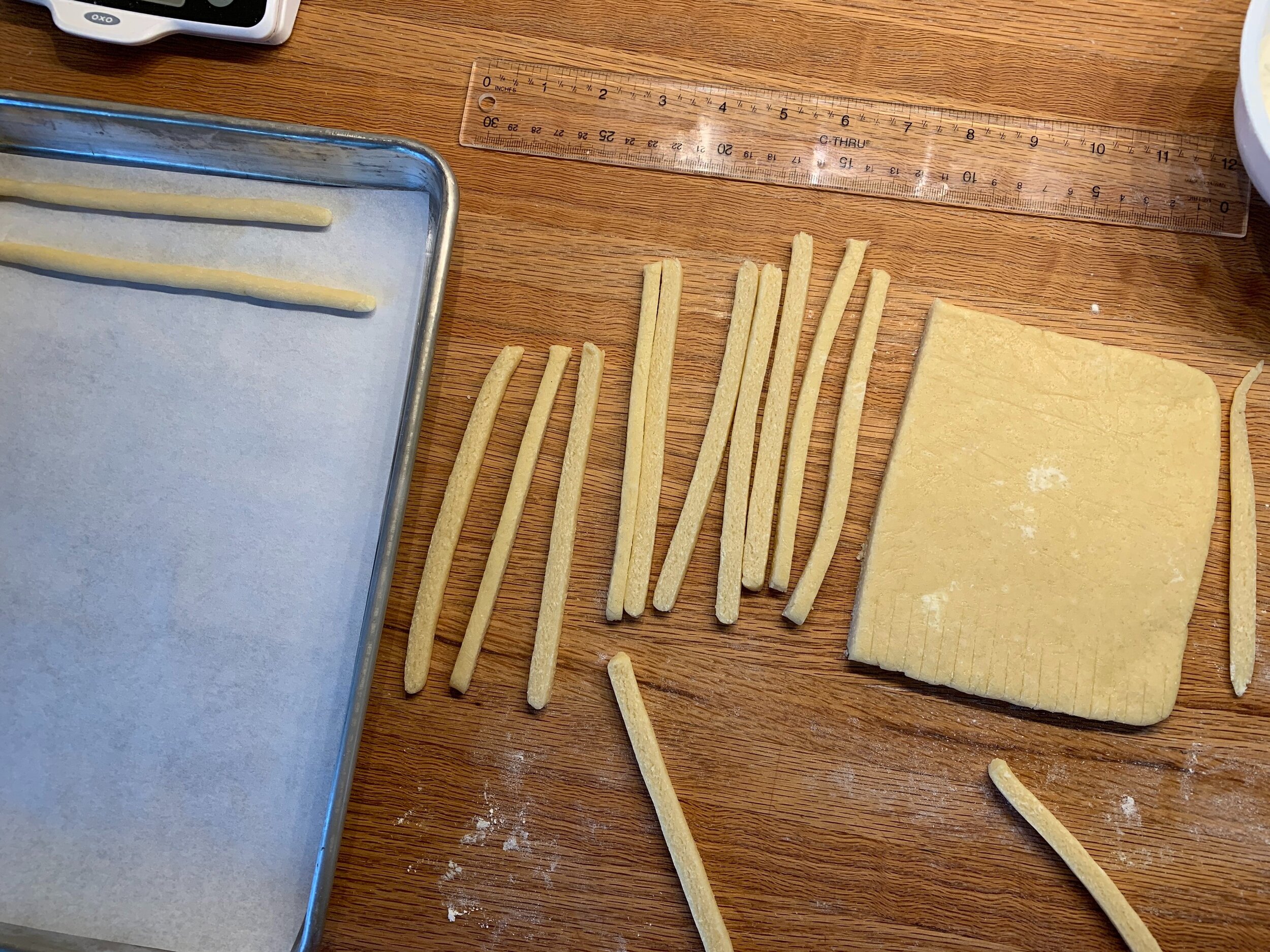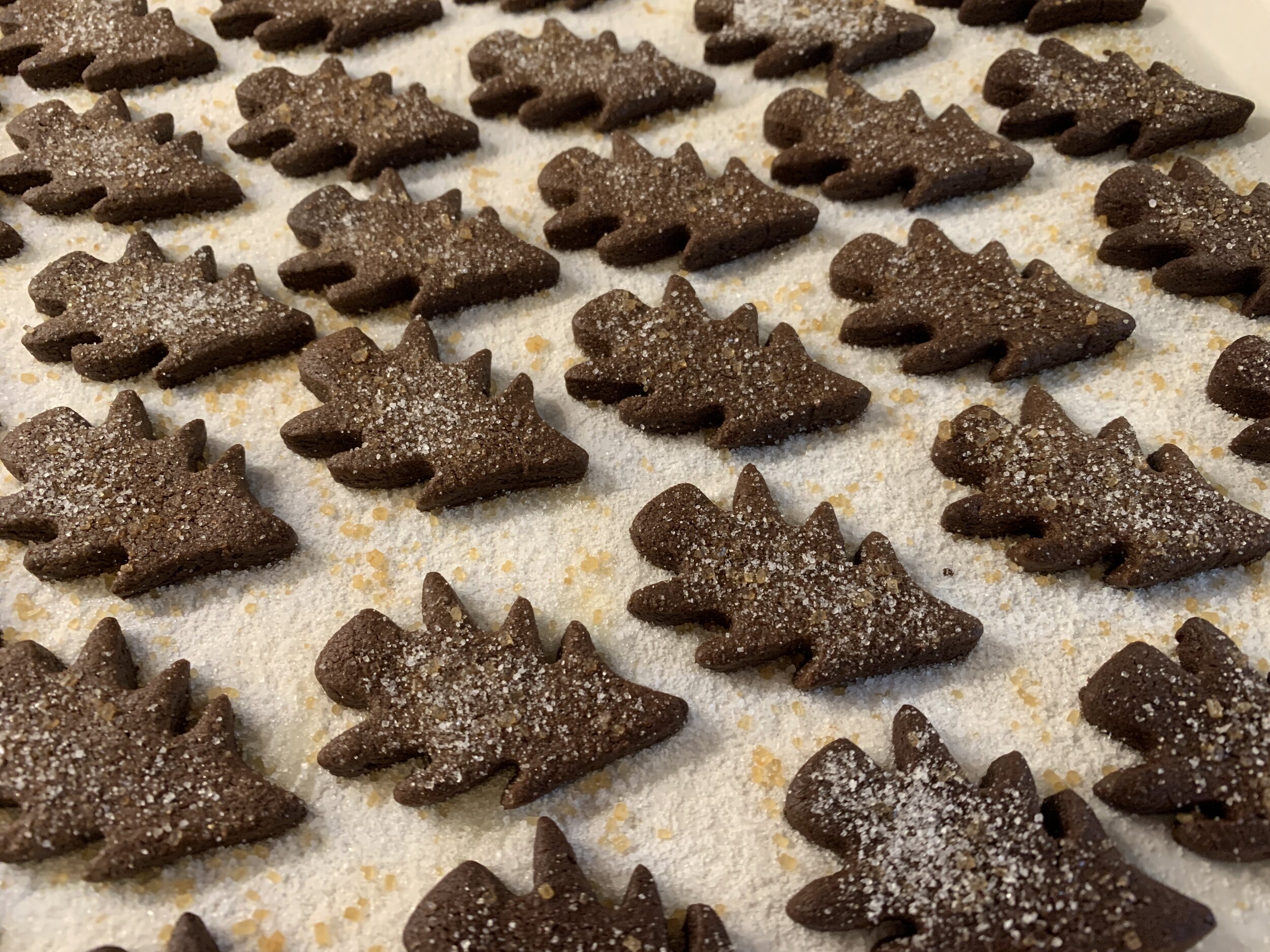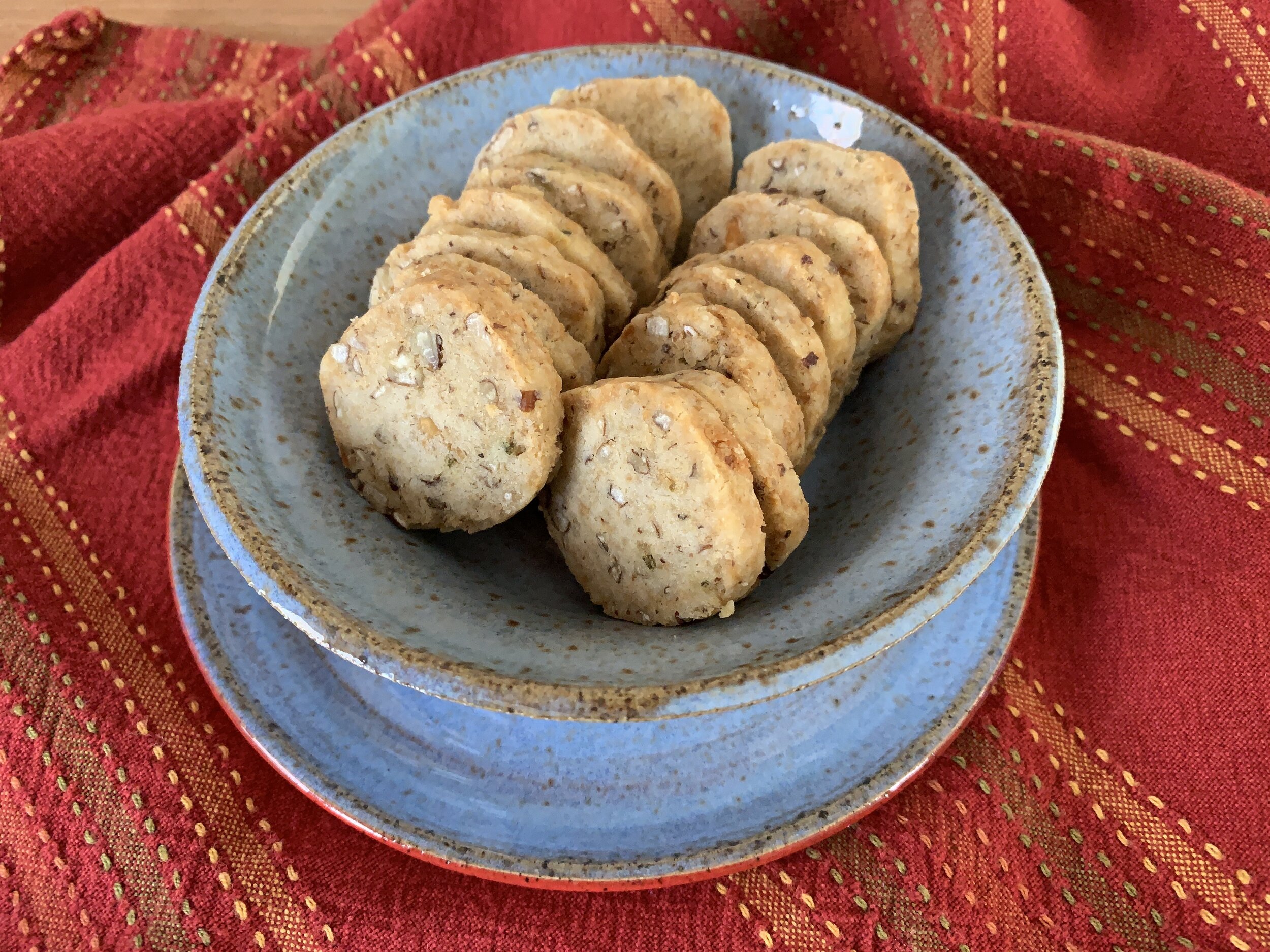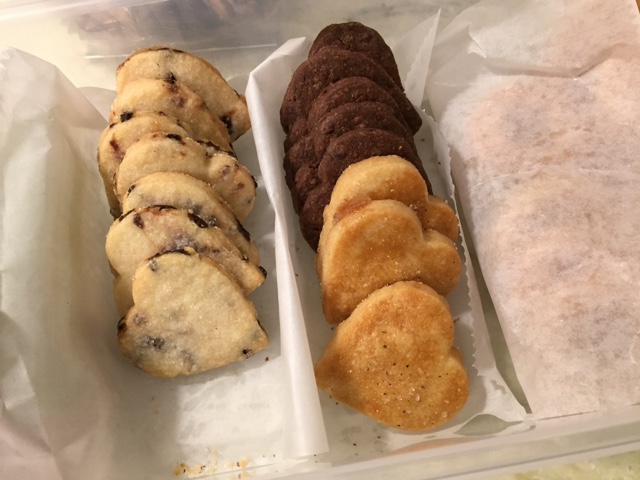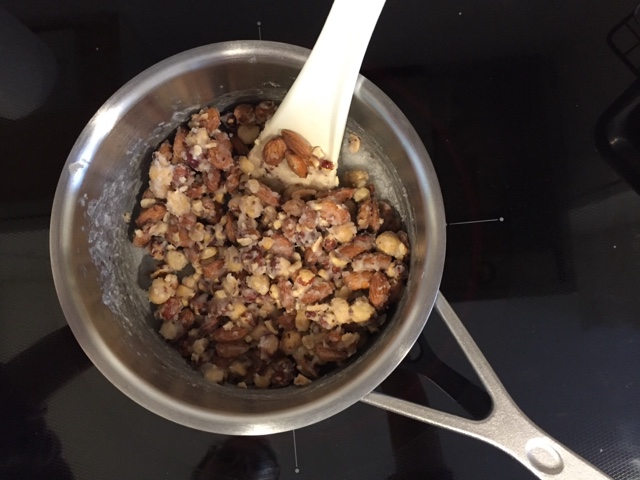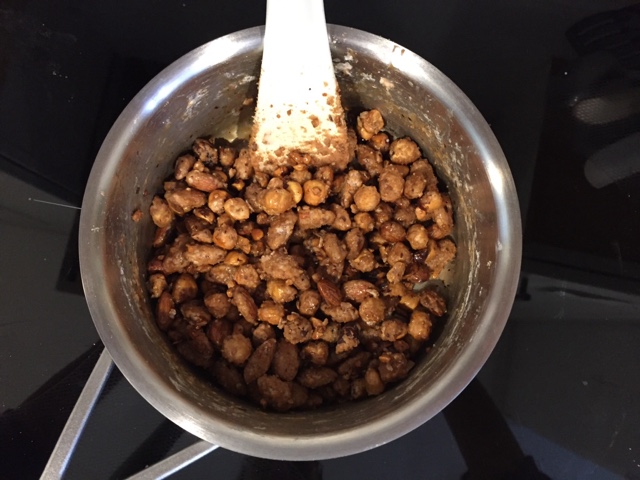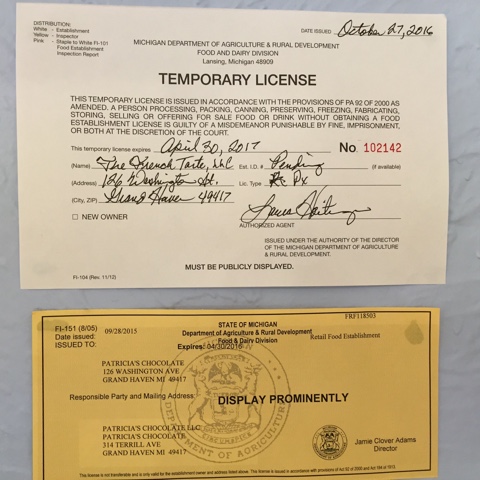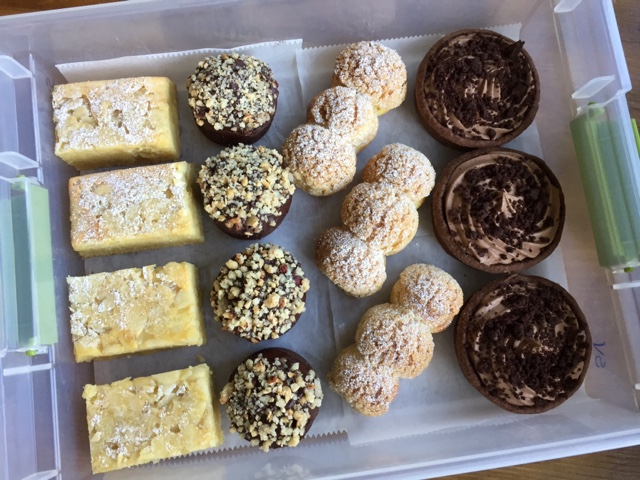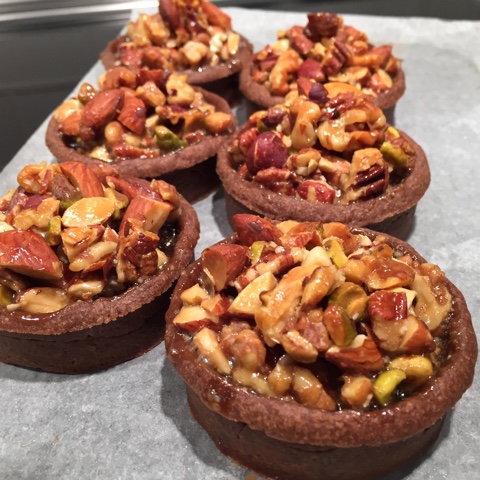A few days ago, during a bout of scattered snow showers, I was in the mood to play a bit in the kitchen. First I wanted to try my hand at using puff pastry scraps from my freezer as though they were pristine
pâte feuilletée (i.e. never been used), and, second, I had some unopened tahini that was dying to be put to use!
First up - the puff pastry project was to test how well puff scraps might actually puff on their second go around. Up until now, when working with puff pastry or teaching classes on the topic, I've always followed (and given) the advice that one should use the scraps only for things in which you don't desire or need much of a puff factor. Some good examples are cheese straws,
palmiers, tart, flan or quiche crusts and even
millefeuille, in which
pâte feuilletée is one of the main components.
Chausson aux pommes is one of my favorite apple pastries to make, and since I had a couple of Granny Smith apples in the fridge,
chausson was my choice for this test. I love how the tartness of the apples marries so well with the buttery pastry.
I peel, core and dice the apples and sauté them in butter and vanilla sugar. This time I also added some of my homemade caramel sauce, hoping to have a richer end product.
 |
| sauté under way |
 |
| pretty nicely caramelized |
I divided up my puff scraps and rolled each out into a rough circle. After a short rest I cut rounds
which were then rolled out into ovals and topped with apples and an extra drizzle of caramel.
After egg washing the lower edge I close them up, press the edges to seal, egg wash and score the surface and sprinkle 'em with vanilla sugar. Heat the oven to 450 and, meanwhile, pop the unbaked
chaussons in the freezer to firm them up and stabilize the dough before they go into the hot oven.
 |
| ready to bake |
I usually bake these for about 20-25 minutes, watching what's going on in the oven and ratcheting the temp down as I go to achieve a nicely browned surface and a fully baked interior.
And YES, they puffed!!
Now I will admit that some of my edge seals left a bit to be desired and some of the innards leaked out, but these guys were mighty tasty. Just ask Steve.
The moral of the story - yes, puff scraps will rise again!
Next came the tahini challenge. I had shortbread on the brain as a follow up to a tahini shortbread recipe I had tried several years ago. That one was from Maura Kilpatrick, the pastry chef at Sofra Bakery in Cambridge. I enjoyed the taste but wasn't quite sure how I felt about the texture - kind of like a PB cookie, but more of a stick-to-the-roof-of-your-mouth yet crumbly number. It definitely had possibilities, and I wanted to give tahini another go.
After some online research I decided on "Chocolate Tahini
Sablés", a recipe I found on the site "one hundred eggs". I've developed a taste for coriander and wondered how that might fit into the flavor profile.
Off I went to my trusty "Flavor Bible", a book that was strongly recommended to me by my former chef at Gracie's, Joe Hafner. One can find almost any ingredient accompanied by a list of all of the things that might go well with it. I was surprised that "tahini paste", as such, was not included in the book, but, upon checking out sesame seeds, I found that coriander was indeed one of the possibilities. Hmmmm, now there's an idea.
 |
| the sesame seed (white) list |
Interestingly, this recipe calls for a hard boiled egg yolk, which brought back memories of making Italian
canestrelli cookies while in school in Florence. It seems that the "hard boiled egg" type of cookie is common in Germany, Poland, Slovenia and Italy (and probably many others). The yolk contributes to the light, crumbly nature of this class of
sablés.
First I boiled a couple of eggs (so I would have plenty to make myself an egg salad sandwich for lunch!), cooled them down in ice water and extracted one of the yolks for the recipe.
I assembled my ingredients, replacing a teaspoon of instant espresso powder with ground espresso, adding 1/2 teaspoon of coriander to the mix, and planning a mini-chocolate-chip stir-in at the end.
Here goes: In a separate bowl whisk together 195 gm flour, 28 gm cocoa powder (I prefer Dutch process), 1 teaspoon of ground espresso and about 1/2 teaspoon ground coriander.
 |
| dry ingredients |
Push the egg yolk through a fine strainer, then add 140 gm room temperature butter, 140 gm well stirred tahini (see side note below), 42 gm granulated sugar, 42 gm brown sugar (I used dark) and 1 teaspoon of salt.
 |
| pouring the tahini in |
Blend all these in a mixer and cream for about 4 minutes till lightened and smooth.
 |
| nicely creamed |
Side note - the online recipe calls for one cup/5 oz of tahini; I found that when weighing the 5 oz or 140 gm, it was actually closer to 2/3 cup.
Add the flour/cocoa mixture and blend just until combined.
Stir in 100 gm mini chocolate chips . . .
 |
| ready to shape |
and divide dough into 4.
Another side note: I prefer to work with smaller amounts of dough when shaping logs, so, whereas the online recipe suggests dividing the dough in two, I divided it in 4.
 |
| logs ready for the fridge |
I shaped 2 square, 1 triangle and 1 round.
This dough is soft, so it's important that it has a proper chill after forming the logs, before slicing and baking.
I like to bake my shortbread "low and slow" so I heated the oven to 300º, coated my shortbread log in raw sugar, sliced 1/4 inch slices and popped them in the freezer before baking.
 |
| ready for the oven |
I baked them approximately 20-25 minutes until set and looking dry.
Boy oh boy, are these crumbly with a lovely, melt-in-your-mouth texture. And the espresso and saltiness comes through very nicely. Whether the presence of coriander is detectable is unclear, but the overall flavor is definitely a thumbs up!
Since I'm known to crave shortbread with my morning cappuccino or my afternoon tea, I popped these chocolate tahini
sablés into the fridge with some salted caramel that I had baked the other day.
I'm set.
 |
| yes sirree! |

